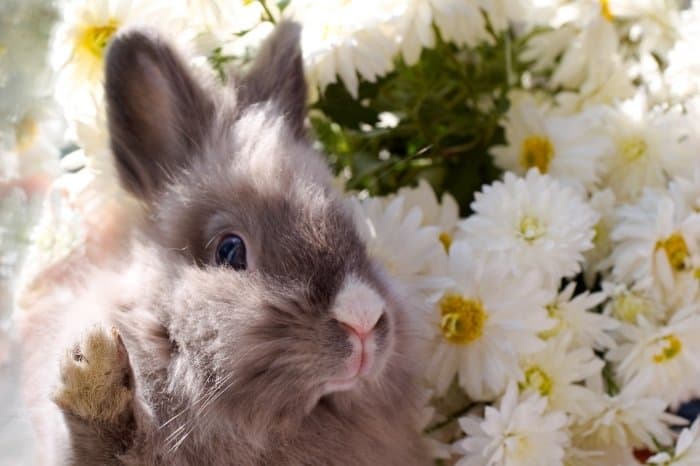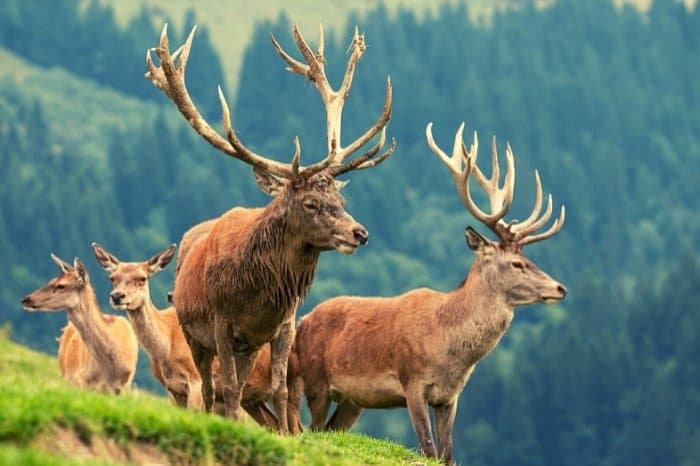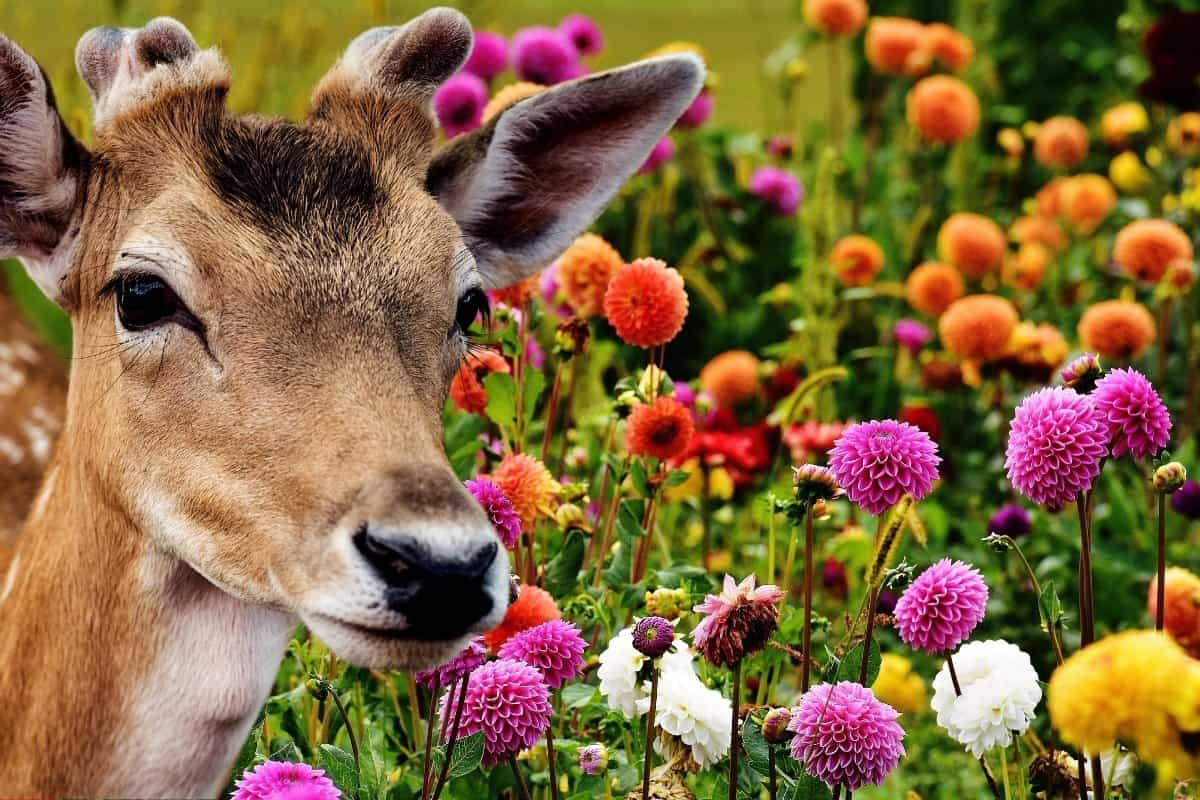Last Updated on December 13, 2021 by Cristina
If you live in a less urban area, picking the flowers for your garden should always include a wildlife consideration – like do deer eat dahlias. Deer are known to destroy foliage and flowers, which is frustrating. Having a pack of deer ruin your carefully crafted landscape in a matter of minutes is not a pleasant sight. Are dahlias inviting deer into your garden? The answer is not as simple, so we dive deeper below.
Why Some Animals Eat Dahlias
We pick dahlias because of their tall stalks crowned with showy flowers. They’re easy to grow and require minimum attention. But animals, on the other hand, love them because they’re herbaceous plants. Snails and slugs often munch on the flowers and foliage. Bunnies mainly avoid dahlias because they can be harmful to them. Squirrels haven’t been noticed to nibble on the leaves or flowers, but they tend to dig out the bulbs! Rodents and chipmunks replicate this behavior.
Deer are listed as animals who eat and don’t eat dahlias. It depends on various conditions; lack of food resources, time of year, place, etc.

Do Dahlias Have Any Nutritional Value?
Dahlias pack a solid amount of vitamins, minerals, and carbohydrates. The stalks have a high fructose content, while the petals are richer in vitamins and fiber.
There are over 40 varieties of dahlias, and some of them are safe for human consumption. In Mexican folk medicine, people use the crushed petals as a soothing balm, while the stalks get consumed as vegetables.
Do Deer Like Dahlias
Deer eat dahlias when all of their other food resources are sparse. You can notice deer destroying your dahlias during spring and summer. It’s the time when some of the adult deer are pregnant and need additional nutrition. It’s also the period when bucks need more energy because they’re growing up.
Deer get over 30% of their water from plants. Dahlias retain a lot of moisture, so they’re one of their preferred food choices.
So when do deer eat dahlias? You might notice more severe damage to your flowers if the deer population in your area increases. With limited food resources and more competition, deer will resort to dahlias. If they’re planted further from your house and accessible from outside, the chances are higher.
Floret Farm’s Discovering Dahlias
Are Dahlias Deer Resistant?
Deer might never touch your dahlias. The main reason is that they’re not hungry. Dahlias are not particularly fascinating that deer will go for them if they have other food available.
The other reason is their location. Deers are known to take precautions and don’t like getting near humans. So if you’ve planted your dahlias near your house entrance, they won’t stroll through your garden to reach the flowers.
Dahlias can be deer resistant, especially if you have other more attractive flowers nearby. Roses, tulips, pansies, and lilies are more appetizing to them. Unfortunately, there’s not a dahlia variety that is deer resistant. The chances of deer eating your dahlias are based on your region, food scarcity, and a bit of luck.
In Georgia, for example, there have been minimal cases of deer eating dahlias. Unlike North Carolina and New Jersey who reported mild to severe damage to dahlias caused by deer.
Which Flowers Do Deer Avoid
If you’re done with deer destroying your precious flowers the moment they bloom, here are some varieties that they won’t go near.
- Calla Lillies – They’re one of the most elegant flowers that bloom in spring and early summer. Their leaves contain toxins which is why the deer avoid them.
- Daffodils – The spring flower of hope is not only full of blossom but deer resistant too. This is due to the alkaloid lycorine contained in the plant. It’s inedible and even harmful to deer.
- Peonies – The late spring-early summer fragrant blooms are not appealing to deer. They’re not poisonous, but deer avoid them mainly due to their fragrance.
- Begonia – Although leafy and with showy flowers, begonia is on the deer’s menu. Their fuzzy stems and wax-coated leaves repel deer.
How To Stop Deer From Invading Your Garden
Deer can munch even on some deer-resistant plants when the plants are young. It depends on how big is the deer population in your area. So to keep them from your garden, use a deer repellant spray. Spray the flowers until they’re grown. You can also install motion-activated sprinklers near your flowers. The sprinklers startle the deer, and they run to seek shelter.
Can You Make A Dahlia Deer Resistant
While no dahlia variety is deer-resistant, there are some measures you can take to protect them. Deer despise sage – the fragrant herb. Plant sage near your dahlias, and the deer won’t go near. Install taller deer netting or fence around your property, and ensure your dahlia flowers are not peaking through the openings. Deer can jump high, so make sure the fence is at least 6 feet tall.
But the most critical step is to check how large is the deer population in your area. If there’s an occasional couple of deers and no one of your neighbors has complained so far, your dahlias might be safe. However, if there’s a large population, the food competition is high, and the dahlias are likely to suffer.
Which States Have The Highest Deer Population?
Texas has the largest population of deer, with 4 million of them. Pennsylvania and Mississippi have 34 to 38 deer per square meter density. Oregon and Colorado have the lowest deer population, so your dahlias are safest there!

Bottom Line: Do Deer Eat Dahlias
Deer are known to have a broad palate – trying to eat everything in sight. They might not like everything they come across, but they’re sure to take a bite. Dahlias are among their chosen flowers; they’re thirst-quenching and nutritious. When food is scarce, and the number of deer grows, your dahlias are likely to go down. To avoid deer damages, put up a fence, plant sage, or leave out dahlias from your landscape altogether.
Have you spotted deer near your flowers? What do you use to repel them?
Mary is a passionate gardener who loves spending her days getting her hands dirty and nurturing her plants. She‘s an avid reader of gardening magazines and is always looking for new ways to make her garden thrive. When not outside tending to her plants, Mary can be found inside reading up on the latest gardening trends, comparing notes with fellow gardeners, and finding the perfect pottery planter for her next planting project.



